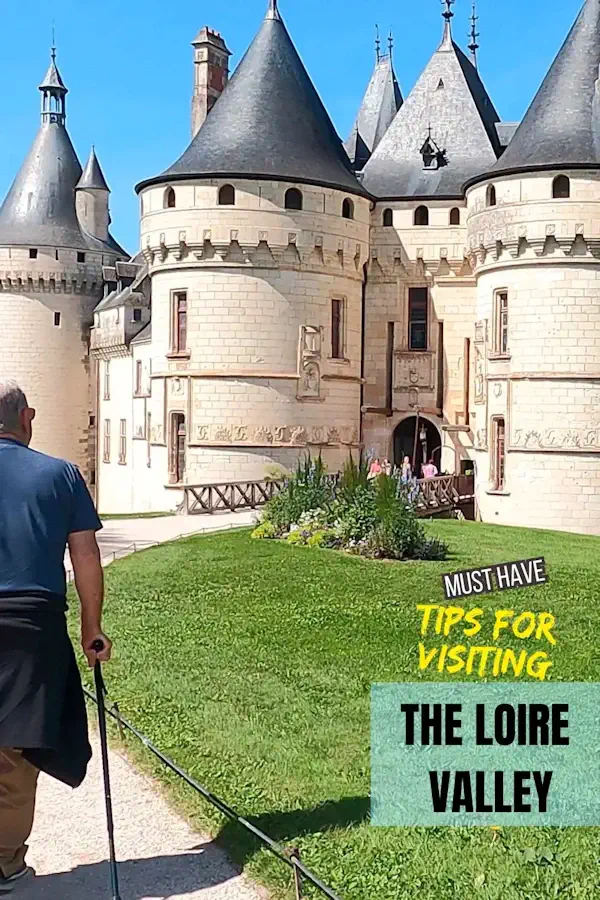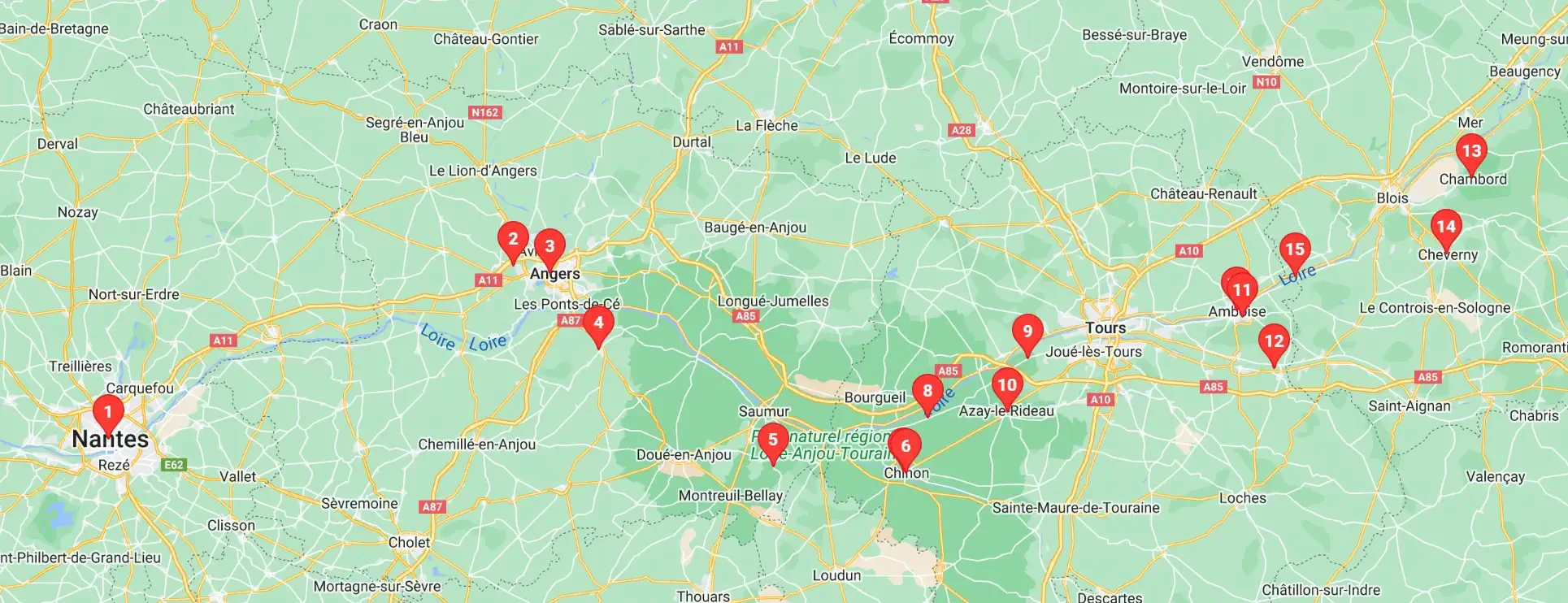by Celeste Lipford and Terry Lipford - last updated on 10/9/2025

Why Visit the Loire Valley in France?
The Loire River, spanning over 1,000 kilometers (the longest river in France), graces more than a fifth of France's total land area, earning its distinction as the longest river in the country. Along its banks, lush vineyards, charming towns, and over 300 unforgettable châteaux and fortresses await exploration in the 175-mile stretch known as the Loire Valley.
Where is the Loire Valley in France?
Geographically located in central France, the Loire Valley primarily follows the course of the Loire River. Situated about 200 to 250 kilometers southwest of Paris.
Where does the Loire Valley start and stop?
The Loire Valley starts near Orléans and terminates at Nantes, 56 km (35 mi) short of the Loire estuary and the Atlantic Ocean.
Our Experience Visiting the Loire Valley
During our seven-day visit, we had the privilege of exploring twelve magnificent châteaux that grace this region. From the grandeur of Château Chambord to the elegance of Château Chenonceau, each possesses its own unique charm and history. Our journey led us through opulent interiors, meticulously maintained gardens, and medieval architectural treasures. Exploring the region over seven leisurely days, we opted for base camps in Angers, Chinon, and Amboise, allowing us to fully immerse ourselves in the area's wonders.
In this video, we'll share insights into the geography of the Loire Valley, the best ways to get there, and top tips for navigating this stunning region including how to pick where to stay and the rules of the road; a detailed review of road signs, toll booth navigation, and parking information. Get ready to plan your dream trip!
Join us on a journey through the heart of France as we explore twelve of the most magnificent castles in the historic Loire Valley. Our video provides an in-depth look at each castle and offers logistical information, including an itinerary with logical base camps for exploring the region to help make your own trip a success.
If you enjoy our videos click here to subscribe to our Youtube Channel. Please also note that these videos are the property of Just Traveling Thru, LLC.
This one-week Loire Valley itinerary, based on our travels, includes essential information on exploring the region's highlights. From suggesting ideal base camp cities for visiting châteaux to providing detailed insights into individual castles, parking options, dining recommendations, and more, we aim to simplify your planning process and enhance your experience.
We split out our information by base camp, we explored the Loire Valley from west to east and choose three base camps. Each blog page provides specific information about the base camp city and the châteaux we visited from that base camp. For each city, we provide overview information, some history, logistical information about visiting each château, and additional information about things to do and see, along with links to help you in your planning.
In the sections below, you will find a map of the region, including base camps and châteaux to visit. Remember, there are over 300 châteaux in the region, and we've selected some of the most popular as well as some smaller gems. While we provide a curated list as a starting point, it's worth researching additional châteaux before your visit to tailor your itinerary to your interests.
Explore the Loire Valley's wonders at your own pace, savoring every moment of your journey.
 Click the map image to view a larger Google Map
Click the map image to view a larger Google Map
Our Loire Valley Route Flow Map (above image) highlights our journey from Angers to Chinon and then to Amboise, with each castle pinpointed. Follow our Loire Valley Itinerary to create your unforgettable Loire Valley adventure.
Click any link below to go directly to that page;
Angers was our stop # 1 on our Loire Valley adventure, primarily because it was to be our first "Base Camp", and secondly because our hotel was only a few blocks from Château d'Angers, which allowed us to park the car and hike over to the fortress. The less than perfect issue that arose, was that it was Sunday when we visited the fortress, which meant that a lot of stores & restaurants were not open. It was probably to our advantage that we hiked from our hotel to the fortress, as parking was very limited and there were no empty spaces.
Click here to view our Angers, France page and view what chateaux we visited while there.
We had selected the village of Chinon as our second "base camp" for exploring various nearby châteaux, our concept was that we could easily drive to any location within a 100 kilometer perimeter around Chinon, which gave us a number of places we wanted to explore. The drive from Angers to Chinon was not quite 100 kilometers (via the A-85). Chinon is on the south side of the Loire River, so we exited the A-85 onto the D-749.
Click here to view our Chinon, France page and view what chateaux we visited while there.
Amboise is adjacent to the widest stretch of the Loire River and it was a pleasant place to visit with a nice old town directly below the hilltop château. To add even more interest, Leonardo da Vinci retired and owned a home here (Château du Clos Lucé).
Click here to view our Amboise, France page and view what chateaux we visited while there.
Image Credit: This image is the property of W. Bulach via Wikimedia Commons using the Creative Commons Attribution-Share Alike 4.0 International license.
The following list contains links to all of our other French Destinations & Information Pages, click any link to go to that page.
Note: All images featured on this page are the exclusive property of Just Traveling Thru, LLC, unless otherwise stated. When images from external sources are used, full credit is given to the original creator, along with a link to the specified license or usage terms. We are committed to respecting copyright and intellectual property rights, ensuring that all third-party images are properly attributed. If you have any questions regarding image ownership or usage rights, please feel free to contact us.
Affiliate Links: We may earn a commission if you make a purchase through one of our affiliate links. This helps support our travel content — thank you!
Content: To review any of our content, make suggestions and/or comments, please click the "About" menu link at the top of this page. You will find our "Contact Us" link on that drop-down menu.